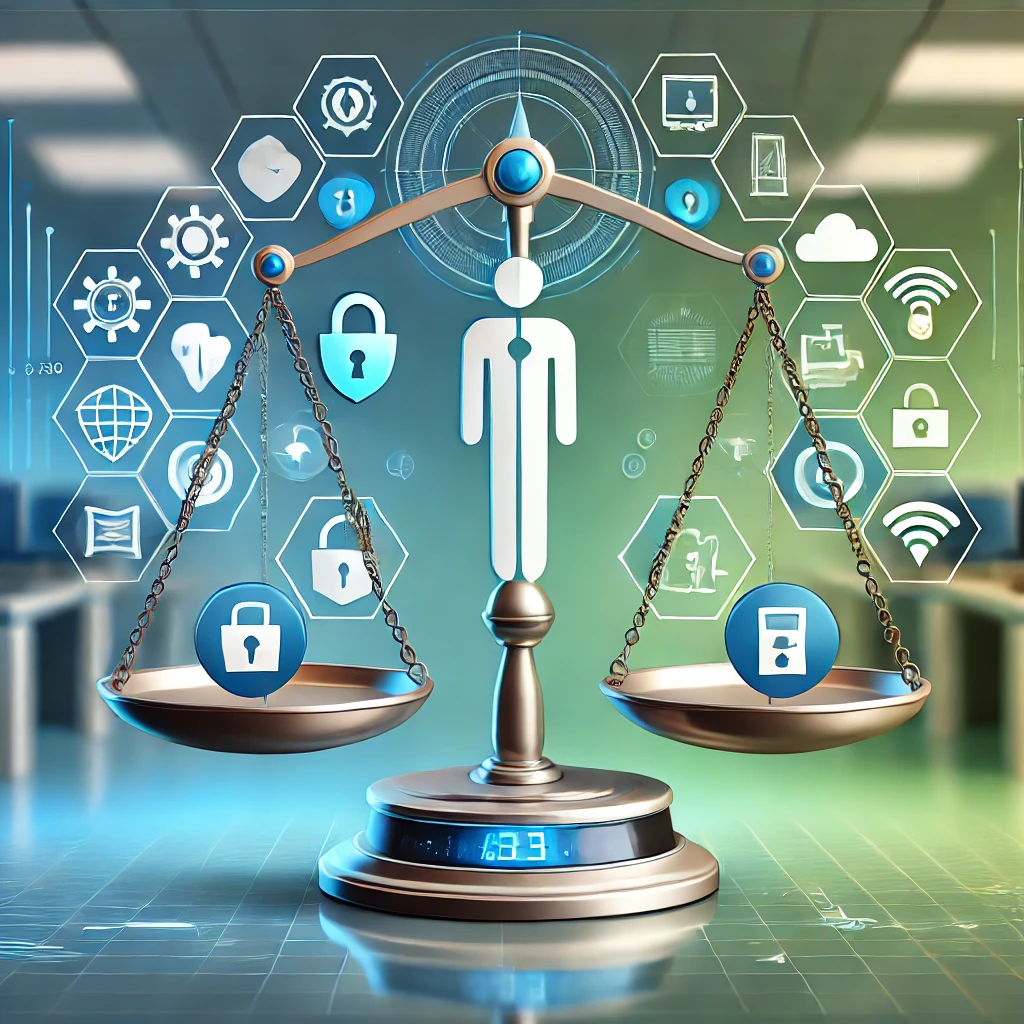IN today’s fast-paced digital landscape, the convergence of a tech mindset and a cybersecurity mindset has never been more critical. A tech mindset, defined by adaptability, innovation, and data-driven thinking, is essential for individuals and organisations to thrive in a technology-driven world. At the same time, a cybersecurity mindset ensures the safety and security of digital assets by focusing on risk mitigation and proactive defence mechanisms.
The intersection of these two mindsets creates a powerful synergy, equipping individuals with the tools to navigate an increasingly complex cybersecurity landscape. However, as beneficial as this convergence is, it also introduces certain risks. Overconfidence, tunnel vision, and burnout are potential challenges that must be addressed to maintain a balanced and sustainable approach to cybersecurity.
Striking this balance requires a strategic blend of continuous learning, ethical awareness, and robust security measures. Understanding how these mindsets complement each other while identifying potential pitfalls is key to ensuring both security and innovation in the digital age.
Developing a strong tech mindset
A tech mindset is not just about understanding how technology works—it is about approaching digital challenges with a problem-solving attitude, embracing innovation, and adapting to the ever-evolving landscape. This mindset consists of several key components:
- Adaptability and innovation
Technology is constantly changing, and those who embrace adaptability are better positioned to leverage new advancements. Being open to emerging technologies, such as artificial intelligence, blockchain, and cloud computing, allows individuals and organisations to stay ahead of the curve.
Innovation goes hand in hand with adaptability. A tech mindset fosters creativity, encouraging individuals to think outside the box and develop new solutions to technological challenges. In cybersecurity, this means anticipating potential threats and developing pre-emptive security measures.
- Data-driven decision making
The modern digital world thrives on data. Understanding how to analyse, interpret, and leverage data effectively is crucial for decision-making. Businesses rely on data analytics to optimise operations, while cybersecurity experts use threat intelligence to predict and prevent attacks.
However, the reliance on data also introduces new challenges. Cybercriminals target valuable information, making data protection a top priority. Without a solid cybersecurity mindset, the benefits of data-driven strategies can quickly become liabilities.
- Ethical awareness and digital responsibility
With great technological power comes great responsibility. Ethical considerations are a fundamental part of a tech mindset, influencing decisions related to privacy, security, and digital accessibility. Individuals must be aware of the broader implications of their technological choices, from ensuring user privacy to preventing misinformation.
Without ethical awareness, technology can be misused, leading to security breaches, data leaks, and privacy violations. This is where a cybersecurity mindset becomes essential, ensuring that technological advancements align with ethical and legal standards.
Building a cybersecurity mindset
A strong cybersecurity mindset is vital for protecting digital assets, preventing data breaches, and mitigating cyber threats. This mindset is built on awareness, proactive risk management, and a commitment to continuous learning.
- Awareness of cyber threats
Cyber threats are constantly evolving, ranging from phishing scams and ransomware attacks to sophisticated state-sponsored cyber espionage. Individuals and organisations must stay informed about emerging threats and understand how they can impact their security.
Recognising red flags, such as suspicious emails or unusual system activity, is a crucial skill. Awareness training should be a priority for businesses and individuals alike, ensuring that cybersecurity becomes second nature in daily digital interactions.
- Proactive security measures
A cybersecurity mindset is not just about responding to threats—it is about preventing them. Implementing strong security measures, such as multi-factor authentication, regular software updates, and encrypted communications, can significantly reduce risks.
Moreover, secure password management is a simple yet effective step in protecting digital accounts. Weak passwords remain one of the biggest cybersecurity vulnerabilities, making password hygiene an essential practice.
- Incident response and risk mitigation
No system is entirely immune to cyber threats. This is why having a well-structured incident response plan is crucial. Knowing how to react in the event of a security breach can minimise damage and prevent further attacks.
Organisations should establish clear protocols for reporting cybersecurity incidents, conducting forensic investigations, and recovering compromised data. The ability to respond quickly and efficiently can mean the difference between a minor security issue and a full-scale data breach.
The synergy between tech and cybersecurity mindsets
The intersection of a tech mindset and a cybersecurity mindset creates a comprehensive approach to digital security. By integrating these two mindsets, individuals can navigate the technological landscape with both innovation and security in mind.
For instance, adaptability—a key trait of a tech mindset—allows cybersecurity professionals to quickly respond to emerging threats. Likewise, data-driven decision-making strengthens cybersecurity strategies by identifying vulnerabilities before they can be exploited.
However, this synergy is not without its challenges. Several risks arise when these two mindsets are not carefully balanced:
- Overconfidence in technology
A strong tech mindset can sometimes lead to overconfidence, where individuals assume that advanced security measures make them invulnerable to attacks. This false sense of security can result in negligence, increasing exposure to cyber threats.
- Tunnel vision on technical solutions
Focusing solely on technical security measures may cause individuals to overlook human factors, such as social engineering attacks. Cybercriminals often exploit human psychology rather than technical vulnerabilities, making awareness and training just as important as technological defences.
- Burnout in cybersecurity professionals
The fast-paced nature of cybersecurity can lead to burnout, particularly for professionals who constantly monitor threats and respond to incidents. A well-balanced approach must include mental health considerations, ensuring that security teams are not overburdened.
Mitigating risks: a balanced approach
To maintain a sustainable approach to cybersecurity, individuals and organisations must adopt a holistic strategy. This includes:
- Combining technical and human-focused security measures – While firewalls and encryption are essential, training individuals to recognise cyber threats is equally important. Security should be approached from both technological and behavioural perspectives.
- Encouraging continuous learning – The cybersecurity landscape evolves rapidly, requiring constant education and skill development. Regular training, certifications, and workshops ensure that individuals stay informed about the latest threats and solutions.
- Fostering a security-first culture – Cybersecurity should not be an afterthought. Organisations must integrate security into their operations, ensuring that every employee understands their role in maintaining digital safety.
- Prioritising well-being in cybersecurity teams – Mental health and work-life balance should be a priority to prevent burnout. Encouraging a healthy work culture allows professionals to remain effective in managing security threats.
Future trends: innovation vs. security
As technology advances, new cybersecurity challenges will emerge. Artificial intelligence is increasingly being used for both cyber defence and cyberattacks, requiring adaptive security measures. The zero-trust security model, which assumes no entity can be trusted by default, is gaining traction as organisations seek stricter access controls.
Blockchain technology is also being explored for enhancing security, particularly in data integrity and identity verification. Meanwhile, governments and regulatory bodies are implementing stricter data protection laws, making compliance a key focus for businesses.
Striking a balance between innovation and security will be crucial in navigating the future digital landscape. Organisations that successfully integrate technological advancements with robust cybersecurity frameworks will be best positioned for long-term success.
The path forward
The convergence of a tech mindset and a cybersecurity mindset offers immense opportunities but also presents challenges that must be carefully managed. By fostering adaptability, critical thinking, and ethical awareness, individuals can leverage technology while ensuring robust security.
However, risks such as overconfidence, tunnel vision, and burnout must be mitigated through continuous education, collaboration, and a focus on well-being. The future of cybersecurity lies in balancing technological progress with proactive security measures.
Ultimately, those who successfully integrate these two mindsets will lead the way in creating a safer, more resilient digital world.





